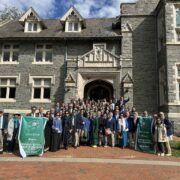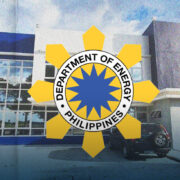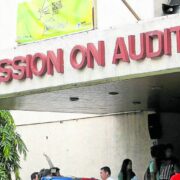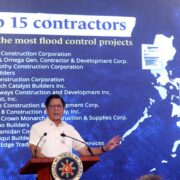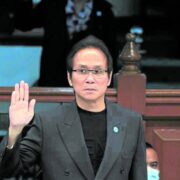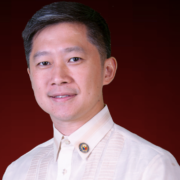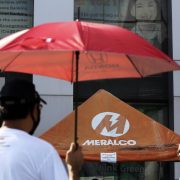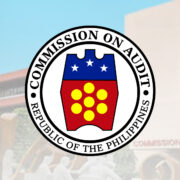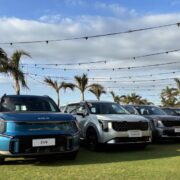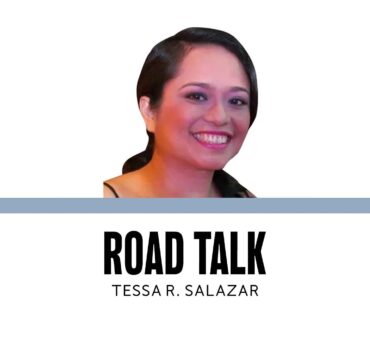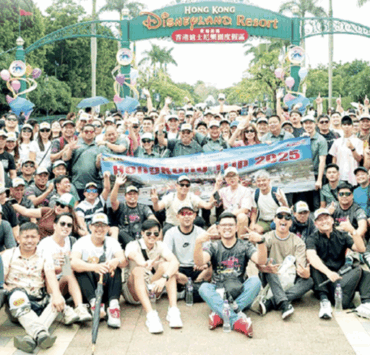‘Kyodotai’: Community, through mobility

I almost thought that it wouldn’t push through, the celebration of Toyota Motor Philippines Foundation’s 35th anniversary at the Grand Hyatt Manila in Bonifacio Global City last July 25. What with successive days of heavy rains brought about by the monsoon season—Habagat—exacerbated by tropical storms Crising, Dante, and Emong the week before. But my friends over at TMP and TMPF told me, hell or high water, the program would proceed.
It was a major event, as I noticed by the caliber of guests that came. Many were VIPs from various government agencies. The First Lady herself was in attendance, and she stayed for most of the program. In the crowd I spotted Dr. Michael L. Tee, now the Chancellor of UP Manila. I used to bug him for a news scoop or statement when I was still writing for this newspaper’s health section years ago. Dr. Robby Cereno, recently retired vice chancellor of UP Los Baños, was also here. I got to chat with them, as well as with many friends from TMP, TMPF, and Toyota Motor Corp from Japan.
As the anniversary program went along, I learned about TMPF’s far-reaching effects in Filipino society for the past three-and-a-half decades. TMPF organizes its advocacies into four pillars: Education, Health, Environment, and Community Service, with the fifth pillar—Mobility+—just introduced on this occasion. For its entire existence, TMPF has poured all its efforts and resources into these pillars. And the numbers they show for it today are massive.
Here’s a rough breakdown: 101,000 beneficiaries of its medical, dental and surgical outreach programs; over 1,200 youths granted scholarships into 20 partner schools since 1990; P800 million either donated and invested to the UP Asian Center building and auditorium, the TMP School of Technology, and other activities centered on the main pillars.
Apart from those, TMPF has supported a number of projects, such as the Lab for All program of First Lady Louise Araneta-Marcos, which helps underserved communities gain more access to basic healthcare, the Adopt-a-School Program in Pulong Sta. Cruz Elementary School in Santa Rosa City, where laptops, TVs and wi-fi have been provided to each classroom, the George Ty-Toyota Asian Cultural Center at the University of the Philippines in Diliman, the UP Los Baños’ Makiling Botanic Gardens, the National Greening Program wherein it has committed to plant 1 million trees, and the Toyota-City of Santa Rosa-Gawad Kalinga Village, a housing project for 160 families.
And just that day, during the TMPF anniversary celebration, its chairman Alfred V. Ty announced it had pledged P3.5 million in cash for the Department of Social Welfare and Development (DSWD) to buy rice for those affected by the past week’s storms.
To highlight that its Mobility+ pillar has hit the ground running, TMPF, in a special segment before the anniversary program, revealed the rollout of its HEAL Program, where Ty announced the deployment of two Toyota Coasters as mobile clinics and Tamaraws as shuttle services for healthcare workers of the Philippine General Hospital.
TMPF’s strategic global partner Toyota Mobility Foundation (TMF) also recognized the significance of the occasion, as its deputy chairman Susumu Matsuda, who came on behalf of Toyota Motor Corp chair Akio Toyoda, delivered this message from Toyoda: “Our hearts go out to those affected by the recent typhoons in the Philippines. We renew our dedication to respond to the real needs of people, and we hope our program will be able to serve community needs in the Philippines.”
TMPF has certainly made the most of its time since it began in 1990. TMPF president Jose Maria A. Aligada said, “TMPF was built on the philosophy of our esteemed founding chairman Dr. George SK Ty: ‘We give back to society and the communities from which we derive our resources.’ These words are more than a guiding principle—they are a solemn responsibility. As the social and humanitarian arm of TMP, TMPF has always sought to uplift, to empower, and to contribute meaningfully to national development. For 35 years, TMPF has pushed sustainable, people-centered and impactful programs.”
Ty, in his speech, cited the “new mobile clinic initiative with Toyota Mobility Foundation, that we selected the PGH to donate three Tamaraw vehicles to provide shuttle service for the much-needed commuting of the health workers to travel to the hospital daily, as well as, two units of Toyota Coaster mobile clinics to bring medical, diagnostic and laboratory testing procedures to the province of Cavite.”
As for the fifth pillar Mobility+, Ty said, “In synergy with other pillars, it will be instrumental in creating a bigger impact through the mobility of people, mobility of things, mobility of information, and mobility of free and creative ideas for many Filipinos. We are excited to develop innovative programs, and simultaneously, make the organization felt with its new brand identity.”
In her presentation, TMF program manager Nanako Kumamoto explained: “Project HEAL, or Healthcare Mobility for All, has a simple objective: To improve healthcare access by improving mobility barriers in three ways: First, we aim to increase accessibility to healthcare services ensuring that those in the remote communities are served closer to their homes; Second, we want to provide safe, convenient transport options for our healthcare professionals; and finally we hope to develop a replicable model, one that leverages data in effective coordination between institutions to build a system that we can scale up and also be replicated.”
707,000 patients annually
In his speech, PGH Director Dr. Gerardo Legaspi said: “(With the HEAL Project), we have now established a pathway wherein our specialist can go to the Ternate clinic in Cavite and be able to serve the community not only with consultation or diagnostic evaluation but now with the complete laboratory needs required by our Philippine Health Insurance Corporation so that the community of Ternate in Cavite would be eligible for what we call the Konsulta package, the outpatient care of our families in the community. What does this do for them? This will make them eventually capable of running their own clinic independent already of the efforts we have started today. This may take some time but this first step is the most important step.”
He added: “We see around 707,000 patients a year, and 30 percent of these come from Calabarzon, and majority of Calabarzon patients come from Cavite. That’s the first consideration that we had. And in the data in the outpatient department, surprisingly a lot of them still go for hypertension, diabetes, urinary tract infections, these are the big consults that we have in the PGH. We are thinking that if we are able to bring the services to the community you can imagine now how many patients would not have to travel all the way to Manila.”
Rolling health centers
DOH Secretary Ted Herbosa said: “We have deployed 83 mobile primary care facilities, Toyota coasters, in all provinces in the country. These are clinics, fully equipped with laboratory services, ECG, ultrasound and X-ray machines. These are no ordinary vehicles. These are rolling health centers touching the lives of those who might otherwise have no access to healthcare. These are not just wheels on the road, they are bridges. Bridges that connect hospitals to barangays, doctors to patients, and intentions to lasting impact.”
Thinking about this, I realized as the program wore on during the evening, that my own family had been part of these efforts by TMPF. We had owned and driven a Toyota vehicle—a Corona, a Corolla and a Hiace. The money that we handed over to buy those cars were used to bring all of these programs and projects to life. And this is true for every buyer of a Toyota vehicle. We’ve all had a hand in putting up TMPF’s four (now five) pillars.
As Ty said: “Each and every Toyota vehicle you have helped put on the road has, in turn, allowed TMPF to give back to the Filipino people—moving their lives and helping give them a better quality of living.”
That’s the true “bayanihan” spirit, a community where we all prop up one another, moving human and material resources from purchase to purpose.

